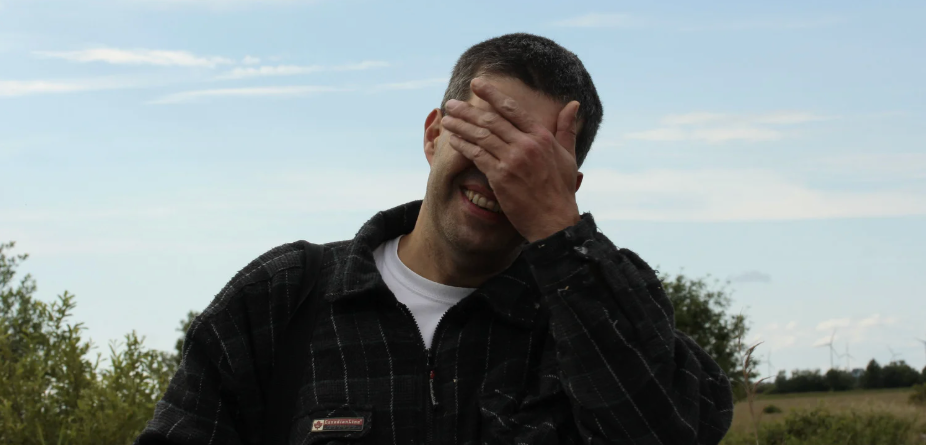New Yorkers rallied around nervous autistic man left alone in the subway until he got home safely
He was waiting for a cousin who never showed up.

A subway station at 59th street in New York City.
New Yorkers may seem like a brash, uncaring bunch to the uninitiated. But when you get to know the people and the city, you’ll probably realize that they are “kind, but not nice,” as opposed to how many describe people on the West Coast as “nice, but not kind.”
A great example of New Yorkers looking out for one another happened on Reddit’s AskNYC subforum earlier this month. AskNYC is where New Yorkers consult one another on various topics, such as where to get cheap rent, subway shortcuts, and places to volunteer.
It all started when a Redditor named Andy, 21, who is autistic, reached out for help in a post titled, “Please help, where do I wait.” On the forum he goes by the name GalacticBambi. Andy is a native New Yorker who moved away at a young age. His father passed away two years ago, so he came back to the Big Apple to see his cousin and learn more about his father.
“My cousin told me to wait for him,” Andy wrote. “I’m autistic, and I feel weird standing in place on the street, I went to the subway. Is it ok to wait in the subway station? My cousin hasn’t responded back for 20 minutes, so I’m not sure what to do right now.”
"I went to the Library and restaurants and when it got dark, my cousin told me to wait for him on a street, but I wasn’t sure where to wait, and I got nervous," he later told Upworthy. "I was afraid to ask people walking around so I asked the Reddit AskNYC."
The request brought together a group of New Yorkers to help Andy feel safe and comfortable while waiting for his cousin. Reddit user Comprehensive_Ad4689, who also has autism, suggested he wait at the subway station.
“I’m autistic, and I feel the same way! It’s totally okay to wait in the train station. I do it all the time for my friend. I sit with my favorite music and do a sudoku puzzle or two or read a book,” Comprehensive_Ad4689 wrote. “When it’s nicer, I like to sit in the plazas to wait. There are two right near First Ave.”
Andy did have one slight problem—his phone was losing battery and he was afraid he’d miss a call from his cousin to meet up. The Redditors suggested he go to a nearby restaurant to charge his phone, and Andy thought it was a great idea.
“I went into a Chinese restaurant and bought tea. It’s OK 'cause I was thirsty anyways,” he wrote. “I had water in my backpack, but tea is my favorite, and I’m glad I can charge up my things now.”
The other New Yorkers checked in to ensure he was doing OK in the restaurant.
“I’m almost done charging at this restaurant, and the music is really boppy,” Andy wrote. “Plus, the owner is really nice, so I’m doing well! I’m gonna head back to the bench in the subway in a bit :)”
As Andy headed back down to the subway station, the Redditors shared some ideas that would help him feel safe, such as waiting by a token booth so he’s close to an MTA official or hanging out near a police officer.
Andy pulled out a “Sandman” comic book and read to stay calm in the subway station while waiting for his cousin. The New Yorkers asked him about the comic to keep him company. “Is it a good comic?” BankshotMcG asked.
“It’s my favorite comic book!!! It’s called ‘Sandman.’ My second favorite comic is Saga," Andy replied. “They are both really good! Sandman has an audiobook that’s really good and a Netflix show too!”
The group also gave him some encouragement, New York style. “You are kicking ass right now on so many levels. You’ve got this!” aitchmalone wrote. “Thanks, aitchmalone!” Andy replied. “New York is definitely a whole new beast for me, but the people are so endearing and kindhearted!”
Eventually, he shared that his cousin wouldn’t return in time, so the commenters suggested that Andy to go home on the subway. "When I got on a train I got lost and I got the courage to ask a couple and they were super nice in telling me I was going the wrong direction and told me which train I should take," he told Upworthy. "And when I got lost again and went off of a train and to a booth the person told me which train I should take and let me go through the gate to wait for the right train."
People from the group reached out to make sure that Andy made it home ok.
“I just got home! I’m super sleepy,” he told the group. “Thanks, everyone for making me less stressed. I’m not used to New York still, but everyone’s really kind and gives really nice advice!! Thanks again!"
Andy loved his time in New York, but now he's home and studying game design in college.
"It was super scary when I was by myself in the city but a lot of people helped me when I was lost so it was super nice," he told Upworthy. "I got to learn about my family and see a lot of cool things like a museum and the Brooklyn Bridge. Even though I was lost a lot, people gave me great advice!"
The game designer looks forward to going back to New York soon.
"I’m taking driving classes so I can take road trips back to New York," he added. "I think it’s my favorite state and I’m glad I got to meet kind people."
- Pixar's upcoming animated film 'Onward' will feature Disney's first ... ›
- I have a mental disorder. This is what happened when I tried to buy a gun. ›
- Amy Schumer's 'SNL' monologue about her husband's autism was a funny way to break the stigma ›
- 10-year-old gives epic PowerPoint presentation to class on autism diagnosis - Upworthy ›




 Woman in denim jacket covers face with sleeve, standing outdoors with blurred background.
Woman in denim jacket covers face with sleeve, standing outdoors with blurred background. Woman with outstretched arms in a sunlit field, enjoying the outdoors.
Woman with outstretched arms in a sunlit field, enjoying the outdoors. Lush forest with vibrant green and orange foliage in soft, misty sunlight.
Lush forest with vibrant green and orange foliage in soft, misty sunlight. Friends laughing and drinking coffee at a cozy cafe table.
Friends laughing and drinking coffee at a cozy cafe table. Woman with curly hair in sunlight, eyes closed, wearing a purple top.
Woman with curly hair in sunlight, eyes closed, wearing a purple top. Man smiling with hand over face, standing outdoors against a blue sky background.
Man smiling with hand over face, standing outdoors against a blue sky background. Hand painting a still life on canvas with blue and orange tones.
Hand painting a still life on canvas with blue and orange tones. Woman sitting on a chair in the water, writing in a notebook at sunset.
Woman sitting on a chair in the water, writing in a notebook at sunset.


 Newborn's first cry marks a fresh beginning.
Newborn's first cry marks a fresh beginning. Newborn baby.
Newborn baby.
 Women walking down a street.Image via Canva Photos.
Women walking down a street.Image via Canva Photos.  Woman aware of her surroundings in a parking garage. Image via Canva Photos.
Woman aware of her surroundings in a parking garage. Image via Canva Photos.
 "You're hilariously brilliant at everything you hate."
"You're hilariously brilliant at everything you hate."  "Bridget is authentically herself…and triumphs in her own way."
"Bridget is authentically herself…and triumphs in her own way."  "They're written in some curious language that I can't really understand."
"They're written in some curious language that I can't really understand."